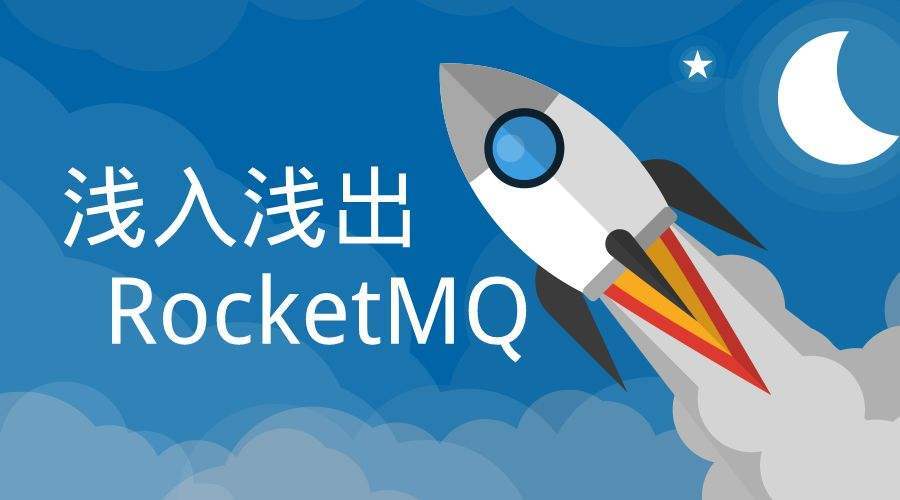消息消费者(Consumer)
负责消费消息,一般是后台系统负责异步消费。一个消息消费者会从 Broker 服务器拉取消息、并将其提供给应用程序。从用户应用的角度而言提供了两种消费形式:拉取式消费、推动式消费。我们接下来主要介绍 Pull 模式
Pull 模式的处理机制
Consumer 消费的一种类型,应用通常主动调用 Consumer 的拉消息方法从 Broker 服务器拉消息、主动权由应用控制。一旦获取了批量消息,应用就会启动消费过程。
在 RocketMQ 中有两种 Pull 方式,一种是比较原始 Pull Consumer,它不提供相关的订阅方法,需要调用 pull 方法时指定队列进行拉取,并需要自己更新位点。另一种是 Lite Pull Consumer,它提供了 Subscribe 和 Assign 两种方式,使用起来更加方便。
Pull 模式的使用特点
相比 Push 的运行特点
与 PUSH 模式相比,PULL 模式需要应用层不间断地进行拉取消息然后再执行消费处理,提高了应用层的编码复杂度,为了 Pull 方式的编程复杂度,RocketMQ 提供了调度消费服务(MQPullConsumerScheduleService),在 topic 的订阅发送变化(初次订阅或距上次拉取消息超时)就触发 PULL 方式拉取消息。
DefaultMQPullConsumer
针对于 DefaultMQPullConsumer 源码流程进行相关的分析,对于 Push 模式而言,Pull 模式比较适应于客户端拉去的速度由自己进行控制处理。而且实现的原理和复杂程度也简单了很多,我们从实现出发,进行分析对应的实现流程。
DefaultMQPullConsumer 的 Pull 拉取模式的开发案例
指定队列模式消费对应队列的消息
DefaultMQPullConsumer consumer = new DefaultMQPullConsumer("please_rename_unique_group_name_5"); consumer.setNamesrvAddr("127.0.0.1:9876"); consumer.start(); try { MessageQueue mq = new MessageQueue(); mq.setQueueId(0); mq.setTopic("lob"); mq.setBrokerName("brokerName"); long offset = 26; PullResult pullResult = consumer.pull(mq, "*", offset, 32); if (pullResult.getPullStatus().equals(PullStatus.FOUND)) { System.out.printf("%s%n", pullResult.getMsgFoundList()); consumer.updateConsumeOffset(mq, pullResult.getNextBeginOffset()); } } catch (Exception e) { e.printStackTrace(); } consumer.shutdown(); }
复制代码
消费所有队列数据
从所有队列进行选择队列模式,并且存储 offset 在被本地。
DefaultMQPullConsumer consumer = new DefaultMQPullConsumer("groupName");consumer.setNamesrvAddr("name-serverl-ip:9876;name-server2-ip:9876");consumer.start();Set<MessageQueue> mqs = consumer.fetchSubscribeMessageQueues("order-topic");for(MessageQueue mq:mqs){ try { // 获取消息的offset,指定从store中获取 long offset = consumer.fetchConsumeOffset(mq,true); while(true){ PullResult pullResult = consumer.pullBlockIfNotFound(mq, null, getMessageQueueOffset(mq), 32); putMessageQueueOffset(mq,pullResult.getNextBeginOffset()); switch(pullResult.getPullStatus()){ case FOUND: List<MessageExt> messageExtList = pullResult.getMsgFoundList(); for (MessageExt m : messageExtList) { System.out.println(new String(m.getBody())); } break; case NO_MATCHED_MSG: break; case NO_NEW_MSG: break; case OFFSET_ILLEGAL: break; } }} catch (Exception e) { e.printStackTrace(); }}consumer.shutdown();
// 保存上次消费的消息下标private static void putMessageQueueOffset(MessageQueue mq, long nextBeginOffset) { OFFSE_TABLE.put(mq, nextBeginOffset);}
// 获取上次消费的消息的下标private static Long getMessageQueueOffset(MessageQueue mq) { Long offset = OFFSE_TABLE.get(mq); if(offset != null){ return offset; } return 0l;}
复制代码
fetchSubscribeMessageQueues(从指定 topic 中拉取所有消息队列)
根据 Topic 获取该 Topic 的所有消息队列,用于遍历消息队列,从每个消息队列中获取消息,
调用 DefaultMQPullConsumer.fetchSubscribeMessageQueues(String topic)方法,根据 topic 获取对应的 MessageQueue(即可被订阅的队列),在该方法中最终通过调用 MQAdminImpl.fetchSubscribeMessageQueues(String topic)方法从 NameServer 获取该 topic 的 MessageQueue。
/** * @param topic Topic名称 * @return 该Topic所有的消息队列 */@Overridepublic Set<MessageQueue> fetchSubscribeMessageQueues(String topic) throws MQClientException { return this.defaultMQPullConsumerImpl.fetchSubscribeMessageQueues(withNamespace(topic));}
复制代码
fetchSubscribeMessageQueues 底层调用
调用 MQClientAPIImpl.getTopicRouteInfoFromNameServer(String topic, long timeoutMillis)方法,其中 timeoutMillis=3000,该方法向 NameServer 发送 GET_ROUTEINTO_BY_TOPIC 请求码获取 topic 参数对应的 Broker 信息和 topic 配置信息,即 TopicRouteData 对象;.
public Set<MessageQueue> fetchSubscribeMessageQueues(String topic) throws MQClientException { try { TopicRouteData topicRouteData = this.mQClientFactory.getMQClientAPIImpl().getTopicRouteInfoFromNameServer(topic, timeoutMillis); if (topicRouteData != null) { // 2、遍历topicRouteData Set<MessageQueue> mqList = MQClientInstance.topicRouteData2TopicSubscribeInfo(topic, topicRouteData); if (!mqList.isEmpty()) { return mqList; } else { throw new MQClientException("Can not find Message Queue for this topic, " + topic + " Namesrv return empty", null); } } } catch (Exception e) { throw new MQClientException( "Can not find Message Queue for this topic, " + topic + FAQUrl.suggestTodo(FAQUrl.MQLIST_NOT_EXIST), e); } throw new MQClientException("Unknow why, Can not find Message Queue for this topic, " + topic, null); }
复制代码
fetchSubscribeMessageQueues 底层调用
遍历 TopicRouteData 对象的 QueueData 列表中每个 QueueData 对象,首先判断该 QueueData 对象是否具有读权限,若有则根据该 QueueData 对象的 readQueueNums 值,创建 readQueueNums 个 MessageQueue 对象,并构成 MessageQueue 集合;最后返回给 MessageQueue 集合
public static Set<MessageQueue> topicRouteData2TopicSubscribeInfo(final String topic, final TopicRouteData route) { Set<MessageQueue> mqList = new HashSet<MessageQueue>(); List<QueueData> qds = route.getQueueDatas(); for (QueueData qd : qds) { if (PermName.isReadable(qd.getPerm())) { for (int i = 0; i < qd.getReadQueueNums(); i++) { MessageQueue mq = new MessageQueue(topic, qd.getBrokerName(), i); mqList.add(mq); } } } return mqList; }
复制代码
消息的三种拉取模式
同步拉取消息
/** * @param mq 消息队列 * @param subExpression 消息tag过滤表达式 * @param offset 消费组offset(从哪里开始拉去) * @param maxNums 一次最大拉去消息数量 * @param timeout 超时时间 * @return 存储了拉取状态以及消息 */@Overridepublic PullResult pull(MessageQueue mq, String subExpression, long offset, int maxNums, long timeout) throws MQClientException, RemotingException, MQBrokerException, InterruptedException { return this.defaultMQPullConsumerImpl.pull(queueWithNamespace(mq), subExpression, offset, maxNums, timeout);}
复制代码
异步拉取消息
/** * @param mq 消息队列 * @param subExpression 消息tag过滤表达式 * @param offset 消费组offset(从哪里开始拉去) * @param maxNums 一次最大拉去消息数量 * @param timeout 超时时间 * @param pullCallback 异步回调函数 * @param timeout * @throws MQClientException * @throws RemotingException * @throws InterruptedException */@Overridepublic void pull(MessageQueue mq, String subExpression, long offset, int maxNums, PullCallback pullCallback, long timeout) throws MQClientException, RemotingException, InterruptedException { this.defaultMQPullConsumerImpl.pull(queueWithNamespace(mq), subExpression, offset, maxNums, pullCallback, timeout);}
复制代码
同步阻塞拉取消息
拉取消息,若没有找到消息,则阻塞一段时间。通过该方法获取该 MessageQueue 队列下面从 offset 位置开始的消息内容。
maxNums=32 即表示获取的最大消息个数。
offset 为该 MessageQueue 对象的开始消费位置,可以调用DefaultMQPullConsumer.fetchConsumeOffset(MessageQueue mq, boolean fromStore)方法获取该 MessageQueue 队列的消费进度来设定参数 offset 值该方法最终调用DefaultMQPullConsumerImpl.pullSyncImpl(MessageQueue mq, String subExpression, long offset, int maxNums, boolean block)方法
/** * @param mq 消息队列 * @param subExpression tag过滤 * @param offset 消费组offset * @param maxNums 一次最大拉取数量 * @return */@Overridepublic PullResult pullBlockIfNotFound(MessageQueue mq, String subExpression, long offset, int maxNums) throws MQClientException, RemotingException, MQBrokerException, InterruptedException { return this.defaultMQPullConsumerImpl.pullBlockIfNotFound(queueWithNamespace(mq), subExpression, offset, maxNums);}
复制代码
pullBlockIfNotFound 和 pull 区别是: 前者在没有找到消息的时候会阻塞一段时间以便等待后续消息进入,后者则会直接返回 NOT_FOUND 。
维护消息队列的 Offset
获取队列的消费 Offset
/** * @param mq 队列 * @param fromStore 是否从存储获取,true: 从当前服务器存储中获取,false:从远程broker获取 * @return 消费offset */@Overridepublic long fetchConsumeOffset(MessageQueue mq, boolean fromStore) throws MQClientException { return this.defaultMQPullConsumerImpl.fetchConsumeOffset(queueWithNamespace(mq), fromStore);}
复制代码
调用 DefaultMQPullConsumer.fetchConsumeOffset(MessageQueue mq, boolean fromStore)方法获取 MessageQueue 队列的消费进度,其中 fromStore 为 false 表示从存储端(即 Broker 端)获取消费进度;若 fromStore 为 true 表示从本地内存获取消费进度;
对于从存储端获取消费进度(即 fromStore=true)的情况:
(即 fromStore=false)对于 RemoteBrokerOffsetStore 对象,获取逻辑如下:
以 MessageQueue 对象的 brokername 从 MQClientInstance. brokerAddrTable 中获取 Broker 的地址;若没有获取到则立即调用 updateTopicRouteInfoFromNameServer 方法然后再次获取;
构造 QueryConsumerOffsetRequestHeader 对象,其中包括 topic、consumerGroup、queueId;然后调用 MQClientAPIImpl.queryConsumerOffset (String addr, QueryConsumerOffsetRequestHeader requestHeader, long timeoutMillis)方法向 Broker 发送 QUERY_CONSUMER_OFFSET 请求码,获取消费进度 Offset;
用上一步从 Broker 获取的 offset 更新本地内存的消费进度列表数据 RemoteBrokerOffsetStore.offsetTable:ConcurrentHashMap<MessageQueue, AtomicLong>变量值;
更新消费组 Offset
更新消费组的 Offset,注意:只会在本地内存中更新,并不会同步到远程 Broker.
/** * @param mq 消息队列 * @param offset 消费进度 */@Overridepublic void updateConsumeOffset(MessageQueue mq, long offset) throws MQClientException { this.defaultMQPullConsumerImpl.updateConsumeOffset(queueWithNamespace(mq), offset);}
复制代码












评论